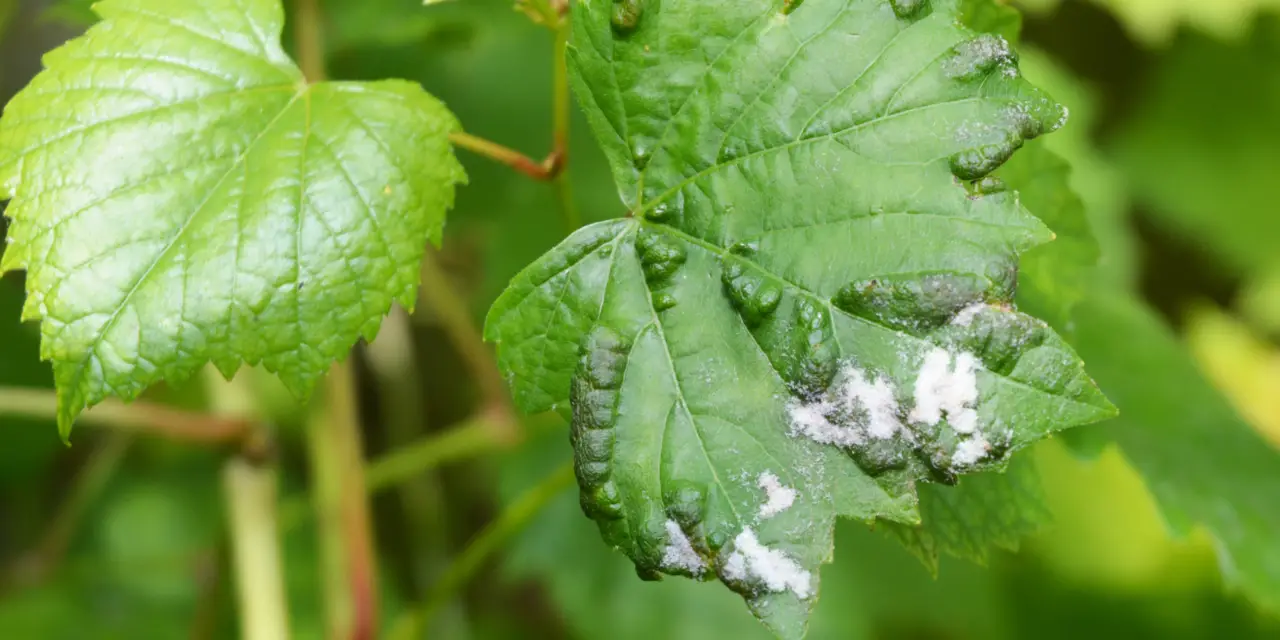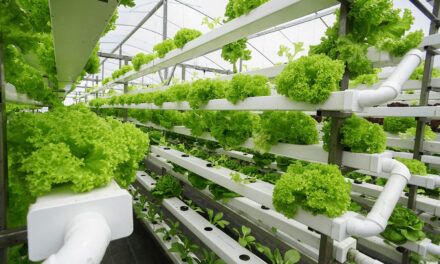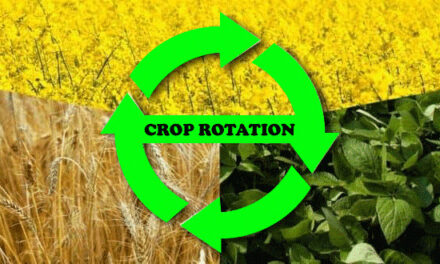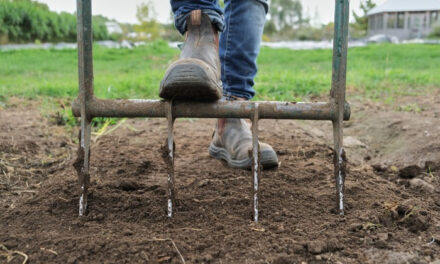If you're here, you may be wondering how to get rid of powdery mildew. But, what is powdery mildew? Powdery mildew is a actually a group of fungal diseases that usually develop in warm, humid weather. It is one of the most common and most noticeable fungal diseases in plants, and today we'll show you how to get rid of it once and for all! Surprisingly, almost no plant is immune to powdery mildew, and there are a few plants that are especially susceptible to this disease including cucumbers, squash, grapes, lilacs, phlox, and roses.
What is Powdery Mildew & How to Recognize It
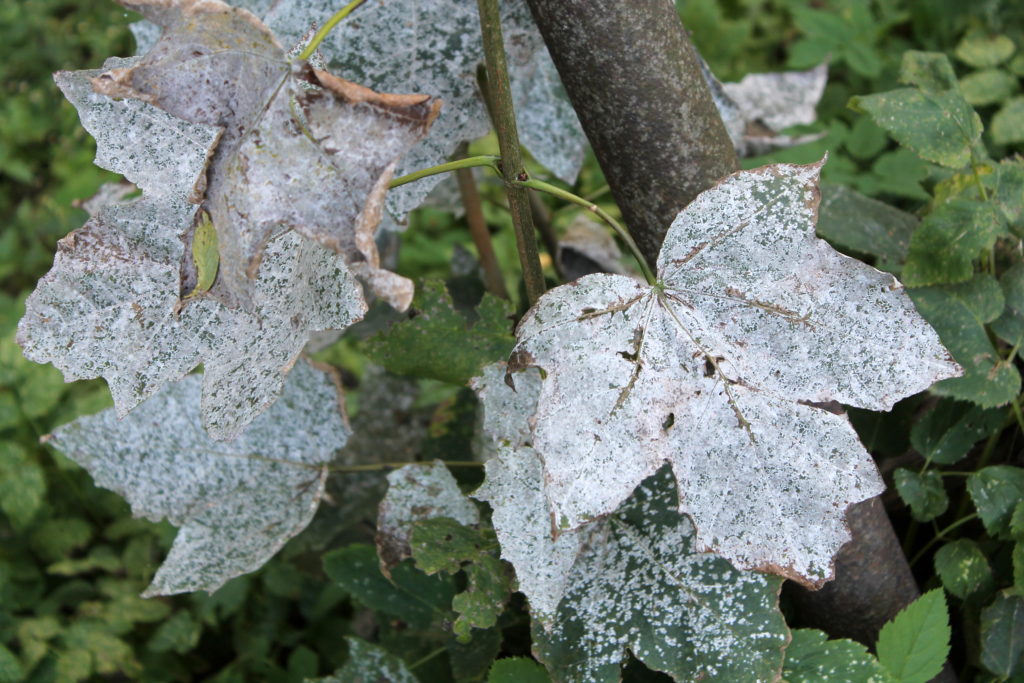
As you may have already guessed from the name, powdery mildew looks much like a powdery deposit on the leaves and stems of plants. Sometimes, these deposits are in splotches, and sometimes, they're blanketed on. These are a number of different powdery mildew fungi, but they're very hard to tell apart because they all look the same. Powdery mildew will usually start underneath the leaves, and can also spread to the flowers, fruits, and buds, before finally depositing onto the tops of leaves.
The interesting thing about powdery mildew, is that it can be plant specific. A different type of powdery mildew will affect your cucumbers than your roses, for example. That means, that for the most part, the powdery mildew fungus affecting your cucumbers cannot affect your roses.
Powdery Mildew Symptoms
Thankfully, powdery mildew is not usually fatal to the plant, unless the mildew is not treated. Just like a human body, the plant will weaken and therefore be susceptible to other, more fatal diseases, if not treated. If powdery mildew is not treated, the plant will also not be able to grow properly, and this is especially important in edible plants such as fruits and vegetables. These types of plants need photosynthesis, and with powdery mildew on the leaves, that can be very hard to achieve. In turn, the number of sugars produced will diminish, which can deeply affect the flavor of the fruit or vegetable. Additionally, if the buds of a plant become infected before flowering, the plant may not set fruit or bloom at all.
- Pale yellow leaf spots.
- White and powdery spots that can affect the tops of leaves, underneath the leaves, the stems, the flowers, the buds, and the fruits.
- Large, white and powdery blotches that can cover certain spots or entire areas.
Causes of Powdery Mildew
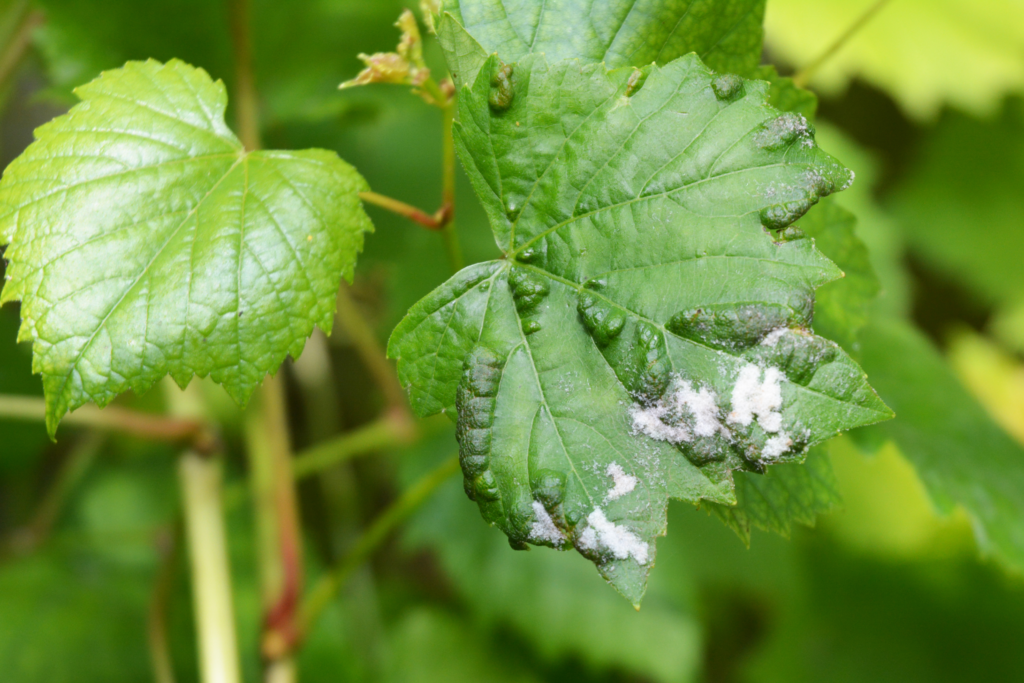
Unfortunately, powdery mildew can happen to even the most experienced gardener. The main causes are warmth and humidity. The problem with powdery mildew is that the spores can overwinter in the plant debris and will produce even more spores in the spring. These spores are usually carried (either via insects, wind, or water) to other plants, therefore spreading the powdery mildew.
- High humidity which causes dampness will causes powdery mildew. Areas that are hot, but low in humidity are usually spared.
- Plants that are too close to one another and crowded will impair air circulation, and therefore cause powdery mildew.
How to Get Rid of Powdery Mildew
There are a few different ways to getting rid of powdery mildew, depending on how many plants were affected and how bad the disease has spread. The least desirable solution is to remove all plants. No gardener wants to get rid of their entire crop, but thankfully you don't have to.
- Remove the Infected Parts: Using a pair of gardening shears or clippers, remove the infected parts of the plant. Do not compost to infected parts, and be sure to wash your hands and the shears with soap and water afterwards to avoid further spread.
- Use a Fungicide: Using a fungicide can be an effective way of getting rid of powdery mildew, and thankfully, your local hardware store or nursery will have plenty of fungicides available. Before using, make sure the fungicide you choose is safe for your plant. Most fungicides will contain potassium bicarbonate, sulfur, neem oil, or copper.
- Make Your Own Fungicide: Alternatively, you can also make your own fungicide using simple ingredients found around your home such as baking soda or milk. Mix 1 tablespoon of baking soda and 1/2 teaspoon of liquid soap in 1 gallon of water. Pour the mixture into a sprayer and spray the entire plant evenly at night. Use a 40/60 ratio of milk to water and spray plants evenly. Do this every 10-14 days to get rid of powdery mildew as well as prevent it. Most fungicides will need to be reapplied every 7-14 days.
- Take Care of Your Garden: There are several ways you can also prevent powdery mildew. Improve circulation by making sure your plants are not over-crowded. Do this by thinning the plants regularly and pruning them if need be. Also, do not fertilize the plants if you see powdery mildew. Do not water plants from above, but rather right at the root. This can prevent the spread of spores.
How to Prevent Powdery Mildew
Although not always possible, there are ways that you can prevent powdery mildew, such as not over-crowding plants, as we mentioned above.
- Choose good, healthy plants: When purchasing plants, make sure they look healthy, and inspect them for any visible diseases or bugs. Then, make sure that you care for the plants properly, meaning give them water when they need it and don't let them dry out too much.
- Powdery mildew resistant plants: If you know you live in an area that's susceptible to powdery mildew, choose plants that are resistant to it. Some plants that are resistant to powdery mildew include bee balm, delphinium, geranium, lungwort, black-eyed Susan, sage, sedum, speedwell or Veronica, verbena, and zinnia.
- If you choose to grow resistant plants, be sure not to grow them in shaded areas where they could become damp and receive powdery mildew spores.

